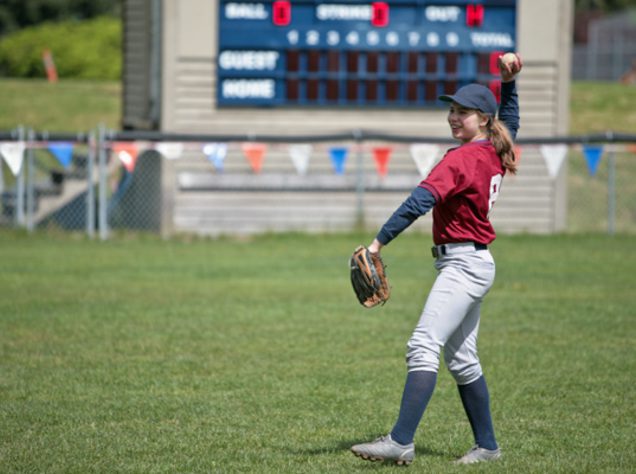The Cutoff Man
The cutoff in baseball is used when a ball is hit to the outfield and a runner is attempting to advance to another base. Cutoffs are very important because of two main reasons; the first is that it allows outfielders to not make a long throw by themselves and the second is that it stops other runners on base from trying to advance any further. Since there are many different scenarios where a cutoff is needed, almost all players on the field can be involved in a relay. For the purposes of this training, we are going to look at the similarities and differences for each position!
Positional Basics
For all positions, it is important to know the fundamentals of a successful relay. As the cutoff man, you always want to make sure your fielder knows where you are. Throwing your hands up in the air and screaming *“cut!”* allows the outfielder to easily spot you, giving them a clear target to throw to. When receiving the throw, no matter where you are on the field, you always want your throwing arm to be pointed towards the outfielder and your catching hand facing the target you want to throw to. Be ready to shuffle your feet in order adjust to the outfielders throw.
Another important piece of being the cutoff is listening to your target. Depending on where you’re throwing, the receiver of the throw will be guiding you into position. This often entails the secondary will-be receiver of the throw shouting out directions in order to line you up well with the target. The main objective is to be in a straight line, this ensures that you’re making the shortest, easiest, and quickest throw possible. As you receive the throw, start to shuffle your feet towards the target to begin the throwing motion and generate power.
First Base
The first basemen plays a large role in not only the infield, but they’re also key in relays home. In most defensive alignments, the first basemen will be the cutoff man for the center and right fielders when they are throwing to home plate. When receiving the throw from a right fielder, you want to be in the middle of the infield dirt. Be sure to stay clear of the base-path to avoid any interference with the runner. If you are the cutoff, you want to move your body to in-between the pitcher’s mound and second base. This will put you on a flat surface to move around freely without having to worry about the elevated dirt.
Second Base
The second basemen is responsible for being the cutoff man on throws from the right fielder to second and third base. Depending on the defensive alignment, the second basemen may also be the cutoff man from centerfield to second base as well. Be sure to communicate with your shortstop though, you don’t want a situation where you both go out to be the cutoff and end up leaving second base open.
Shortstop Similar to second base, the shortstop is responsible to be the relay on throws from left field to second and third base. The shortstop is also responsible for the cutoff from centerfield to third base, and again depending on your team’s alignment, sometimes second base. Always be listening to your target for alignment, this will make the relay much easier.
Third Base
The third baseman’s job is relatively similar to the first baseman’s, but the third baseman is only responsible for the cutoff from left field to home plate. For this cutoff, you want to move your body to the middle of the infield dirt, but be ready to move and adjust your body according to the catcher’s judgment. As you go out for the cutoff, the shortstop should be moving over to third base to cover in case the runner takes too large of a turn and attempts to go back to the base.
Pitchers + Catchers
While pitchers do not have a direct role in most cutoffs, you can still have a huge impact on the play by backing up different bases. Anticipation is key in these scenarios, because, as the pitcher, you need to decide which base to back up. In most cases, the pitcher should back up the base that the lead runner is going to. For example, if there are runners on first and second base, and the ball is hit to centerfield, the pitcher should immediately move to behind home plate, anticipating the throw from outfield to home plate.
Remember, your catcher is the leader on almost all plays — this is because the catcher is the only player on the field who can see everything at once! The catcher must be loud in guiding each player in their respective positions. A baseball field is big, so try to be loud!
Huddle Up!
A successful cutoff can stop the other team for advancing or scoring with the potential to certainly swing the momentum of a game! No matter what position you are playing, there is always a role you can play during a live ball situation. If you are looking to get some individualized practice and want to try out all of these new tips you just learned, check out one of CoachUp’s fantastic baseball coaches!
CoachUp is the safest and easiest way to find a coach for personalized training. With our 100% money-back guarantee and vetted coaches, anyone can achieve their full athletic potential. Find your perfect coach today and become the athlete you want to be!
How useful was this post?
Click on a star to rate it!
Average rating 4.8 / 5. Vote count: 5
No votes so far! Be the first to rate this post.




One Response
This is terrible and written by a coach who doesn’t know what he’s doing. I won’t point out all the flaws in this article but the shortstop always is cutoff to 3B. Never the 2B. Any coach who knows anything knows this.
Any coach who doesn’t know proper cut assignments isn’t a real coach, just a pretender who took the job because he’d be mowing lawns otherwise. Learn something and be correct before you post.
Awful.